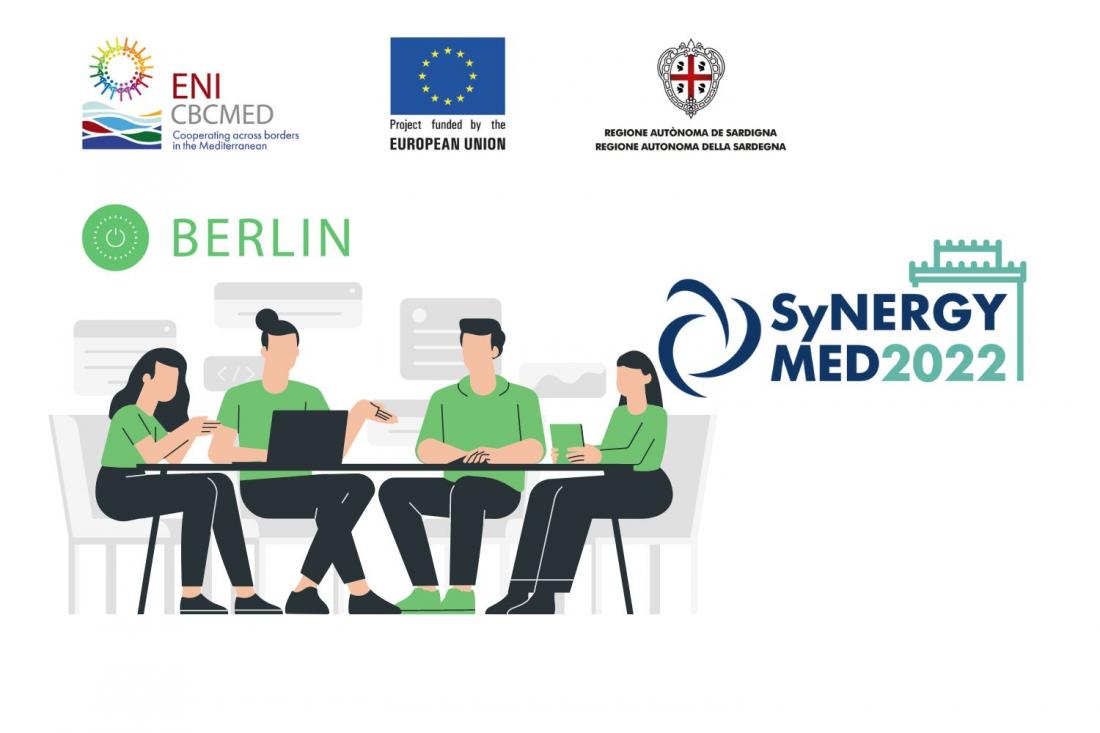BERLIN contributes to the energy transition in the Mediterranean region

Aligned with the EU’s ambitious target to become climate-neutral by the 2050, BERLIN project falls under the ENI CBC Med Programme’s priority to “Support cost-effective and innovative energy renovations relevant to building types and climatic zones, with a focus on public buildings”. Specifically, BERLIN project aims to offer the solution of rehabilitation of public buildings transforming them to cost-effective, smart, and resilient nano-grids using energy storage.
In fact, the three Universities participating in the Consortium, which provide the academic, background and research know-how, and follow the new technological trends and advancements in the field of renewable energy will participate at the Synergy MED - 2nd International Conference on Energy Transition in the Mediterranean Area taking place in Thessaloniki, Greece, between 17-19 October 2022. The Conference continues the idea of establishing a major energy platform in the region, it will focus on topics of interest to the Energy Challenges in the Mediterranean area and address the vast technological changes in all areas of the electric energy business, products, equipment, methods, and so on.
The University of Cyprus (UCY), the University of Western Macedonia (UOWM) and the Ben Gurion University (BGU) have submitted their papers which will be presented at the conference and trigger the discussion on the next technological innovations in the field of renewable energy. The UCY submitted a paper on the “Integration of a Green Hydrogen Subsystem in a Photovoltaic-Battery Nanogrid System”. The paper concerns the integration of Renewable Energy Sources (RES) technologies with the coupling of energy storage and new concepts, such as microgrids, will help in the achievement of decarbonization goals. Microgrids based on RES can maximize self-consumption, in addition to onsite power generation of green electricity, if they are coupled with effective energy storage technologies. The simplest method to store energy in a microgrid is through commercially available Lithium-ion batteries. In the future, Photovoltaic-battery microgrid systems could be further integrated with green hydrogen generation-storage-and-utilization units to acquire additional capabilities, which will help achieve long-term goals. These include longer-term storage, larger scale utilization, fuelling of hydrogen electric vehicles, compact and light energy storage solutions, and transportation/distribution of renewable energy in the form of green hydrogen. The green hydrogen subsystem has the potential of becoming an important part of the microgrid, and it will use abundant materials, without causing a significant environmental footprint.
The UOWM submitted a paper proposing sizing method for Photovoltaic (PV) and Battery Energy Storage Systems (BESS) for buildings with Demand Side Management capability. Three objective functions (OF) are defined, describing the Self-Sufficiency of the building, the Net-Present Value of the investment in PV and BESS, and their combination in a joint expression, respectively. The latter OF provides cost-effective solutions that are potentially more profitable in case of future high increase of the electricity cost. Two analysis methods are developed to find the optimal solution under a pre-defined load shifting strategy. The first one applies an exhaustive search by examining all possible combinations of PV and BESS capacity. The drawback of this method is the high computational burden due to unnecessary access in the solution space. The second method is implemented with a Particle Swarm Optimization (PSO) variant, namely the Unified-PSO. Under this approach, the analysis algorithm is guided in the solution space towards efficient solutions under lower computational time. The comparative assessment of the two methods in both residential and industrial sites verifies that via the PSO algorithm the optimal solutions are found under lower execution time.
The BGU submitted a paper on the rehabilitation of existing public buildings. In fact, the rehabilitation of existing public infrastructure by renewable on-site power production with Photovoltaics (PV) integrated with Energy Storage Systems (ESS) and Demand Side Management (DSM) strategies is a preferable policy to convert an existing building into an autonomous power unit, thus improving the redundancy of power supply architecture. One of the balks in achieving this goal is insufficient awareness of the public to the impact of daily decision and behavior habits on the energy performance of the building, which in turn highly dependent on its eco-structural profile. The aim of this research is to propose a hybrid social-structural (HSS) DSM strategy to reduce energy consumption toward zero-energy performance and off-grid profile of the buildings. Two preliminary schools in the southern Israel with significantly different eco-structural profile were selected as the pilot case study sites for implementing and evaluating both quantitative and qualitative effect of the suggested DSM approach.
You can find more information for the Synergy MED Conference here: https://synergymed2022.gr/









